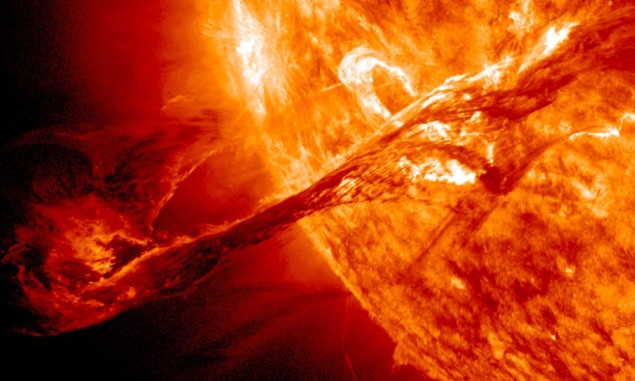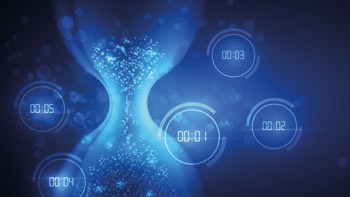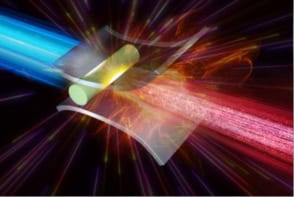
The magnetometers found in some smartphones could allow devices to be used to create a distributed space weather observatory. That is the conclusion of NASA’s Sten Odenwald, who has studied the ability of four popular models of smartphone to detect small disturbances to Earth’s magnetic field.
Following the advent of the iPhone model 3GS in 2009, which contains a 3-axis Hall-effect magnetometer chip, such sensors have become commonplace in smartphone and some other consumer devices. They are used by a range of smartphone apps from compasses to ferrous metal detectors and there is a growing interest in using magnetometers for navigation when GPS signals are not available – such as when the user is a shopping mall.
While smartphone magnetometers are in widespread use, it had not been clear how such apps would be affected by disruptions to Earth’s magnetic field caused by solar storms – which are related to violent processes in the Sun such as coronal mass ejections.
Significant errors
Now, Sten Odenwald of the NASA Space Science Education Consortium has shown that significant errors in smartphone magnetometer readings can be caused by solar-storm level disruptions. While these errors have a negative effect on compass and positioning applications, Odenwald believes that this sensitivity could be harnessed to create a citizen science space-weather observatory that covers large swathes of the Earth.
Odenwald tested four popular smartphone models: the iPhone 6s, and Samsung’s Galaxy S9, Galaxy S8 and Galaxy Note 5. Each phone’s magnetometer was assessed in two ways. First, Odenwald created synthetic magnetometer data for two historical geomagnetic storm events by combining actual magnetic observatory data with each sensor’s typical noise profile. Secondly, each smartphone model was subjected to real magnetic fields generated by a Helmholtz coil to determine its absolute responsiveness to disturbances of about 1 µT. This is a percentage or two of Earth’s magnetic field strength and on par both with the changes caused by solar storms and the sensitivity of magnetometer apps.
Of the four smartphones tested, the most sensitive proved to be the iPhone 6S and the Galaxy Note 5 which, which detected the stronger storms at a signal-to-noise ratio as high as 8.
Auroral zone
Odenwald points out that the magnetometer chips used in each of the tested devices are of 2012–13 vintage, meaning that newer phone models may potentially perform better. The simulated storm data found that smartphone magnetometers proved more susceptible at mid-to-high latitudes. This corresponds to the so-called auroral zone where storms produce the largest geomagnetic changes. At latitudes lower than 38° where geomagnetic changes are not as large, the effect would not be as pronounced.
“Under certain circumstances, geomagnetic storms could be a significant source of error in compass and other positioning applications,” Odenwald reports. “The changes can amount to several degrees of deviation in magnetic compass applications, and this is problematic for orienteering applications in which a stable field over many hours is needed for precise guiding.”
Large storms are relatively rare, however, especially now that we are in a quiet period in the 11-year solar cycle. Even during a solar maxima, large storms only strike once every few months. Indeed, the current lull meant that Odenwald had to simulate historical storms, rather than simply measure live events.
“Unique opportunity”
Beyond the disruption to smartphone apps, Odenwald says that the magnetometers’ sensitivity “presents a unique opportunity for scientific studies of global changes in the geomagnetic field during significant solar storm events”.
Geophysicist Ciarán Beggan of the British Geological Survey agrees but points out that ambient noise is a significant barrier. “It is potentially possible to use mobile phones to detect a geomagnetic storm – and there are projects like this already using phone magnetometers (like CrowdMag)”. He adds, “but the real issue is that it is not easy to distinguish natural signals from manmade noise or interference in particular, and that the phone magnetometers are really noisy in general, as shown [in Odenwald’s work]”.
“Magnetic cleanliness”
Beggan says, “For geomagnetism it is far better to have a few really good magnetometers with excellent signal to noise and good magnetic cleanliness that can detect subtle storms, than millions of poorer records, which are very noisy and prone to unknown interference. At the moment, I think phone magnetometers are just not sensitive enough for large storms.”

New map pinpoints US power lines susceptible to space weather super-storms
Responding to this, Odenwald told Physics World that he envisages a smartphone array being used for “educational purposes rather than scientific research”, allowing high school physics teachers to discuss space weather when they are teaching magnetism.
To this end, Odenwald is now looking to develop software that will combine hundreds of smartphone measurements taken across the US by physics teachers in 2023 to create a movie of the progress of a series of targeted geomagnetic storms across the country.
The study is described in Space Weather.



